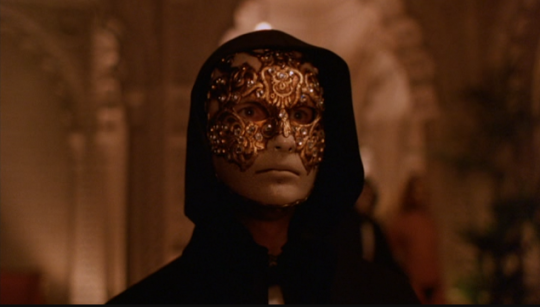The Arc Of Stanley Kubrick: From Killers Kiss to Eyes Wide Shutby Noel Murray
By Yasmina Tawil

Stanley Kubrick made just 13 feature films in his nearly 50-year career, and from the 60s through the 90sthe era in which a Stanley Kubrick picture had a meaningeach new project went through more or less the same press-cycle. During production, reports would leak out about the grueling shoot, and how the reclusive Kubrick was testing the boundaries of cinema and propriety. Then the film would come out, and the critical reaction would be mixed to muted, with some declaring the new work a masterpiece and others calling it a disappointmentor even a pretentious fraud. Years would pass, and with time to sink in, each movie would be extensively reevaluated, eventually landing on best of the decade or even best of all time lists. It was as though each picture had to re-teach the audience how to watch a Stanley Kubrick film.
Eyes Wide Shut is the best case-in-point. Shooting began in the November of 1996 in London, and ended in June of 1998. Throughout that year and a half, there was gossip galore about what Kubrick was up to. The press knew primarily that the film starred Tom Cruise and Nicole KidmanHollywoods most popular couple at the timeand that it was going to be sexually explicit. Once filming completed, Kubrick spent nine months working with editor Nigel Galt, fine-tuning. Less than a week after he completed a final cut and showed it to Warner Bros. and his stars, he died.
So when the movie came out that summer, for a good long while the conversation surrounding it was about everything but what Kubrick had actually made. Instead, the press was preoccupied by
the decision to digitally obscure the orgy scenes, to avoid an NC-17 rating.
whether Cruise and Kidman had wasted a year of their careers making stilted softcore porn.
how American audiences reacted to seeing two of the biggest movie stars in the world in a slow-paced art-film.
whether the Pinewood Studios version of Manhattan looked real enough.
whether Warner Bros. was going to make its money back.
if this was the proper capper to a prestigious career.
By the end of 1999 though, a film that had generally been tagged as a letdown was being rehabilitated. Roger Ebert taped a special edition of his syndicated TV series, wherein prominent Chicago critics extensively unpacked Eyes Wide Shutand thus subtly rebuked the large number of well-known New York critics whod initially shrugged the movie off. The film made a healthy handful of best-of-99 lists (including in New York), and in the decades since its generally become regarded as one of the 90s supreme cinematic achievements, and indisputably worthy of its maker.
Most of the shift in conventional wisdom was due to Kubrick himself. When artists produce outstanding work throughout their careers, its easier to trust that they knows what theyre doingand that if we dont get it right away, we should look again. Its also true that once a film is out of the multiplex marketplace, questions like, Did you like it? become less pressing. Opinion takes a backseat to analysis. And with Eyes Wide Shut, theres as much to pick through and puzzle over as in any of Kubricks filmseven though almost nothing that happens in the picture is left unexplained.
Based on Arthur Schnitzlers Traumnovelle, the movie has Tom Cruise playing Dr. Bill Harford, a successful New York general practitioner who lives in a lavish apartment with wife Alice (Kidman) and their young daughter. The story begins with the couple going to a lavish Christmas party thrown by Bills patient Victor Ziegler (Sydney Pollack), where the pair flirts with other guests before the doctors called in by his host to attend to a nude, overdosing woman. The next night, Bill and Alice have a testy argument about sexual desire, during which Alice confesses that shes recently lusted after another man. Still fuming, he leaves the apartment to go on a house call, and begins a winding two-day odyssey that sees him sexually tempted multiple times. A combination of desperate arousal and burning envy nearly puts him in mortal danger, after he crashes a bizarre masquerade party at a country estate.
For a long time, Bills journey into the night feels like an erotic dream that keeps threatening to become a nightmare. (In fact, Traumnovelle is sometimes translated in English as A Dream Novel or Dream Story.) But at the end, Bill meets again with Victor, who offers a different interpretation of the previous 48 hours. Bills anxious because the morning after he was ejected from the masquerade, one of his friends went missing and a woman who helped him turned up dead. Victor insists that the friend just left town, the woman was a junkie prostitute, and the masked men at the party werent really threatening Bill, they were maintaining the theatrical illusion of an event meant to resemble a decadent, dangerous gathering of some ancient clandestine tribunal.
Victor could be lying. Or more likely hes acting as Kubricks surrogate, telling the audience not to think too hard about shadowy cabals and unsolved murders, because thats not really what Eyes Wide Shut is about.


